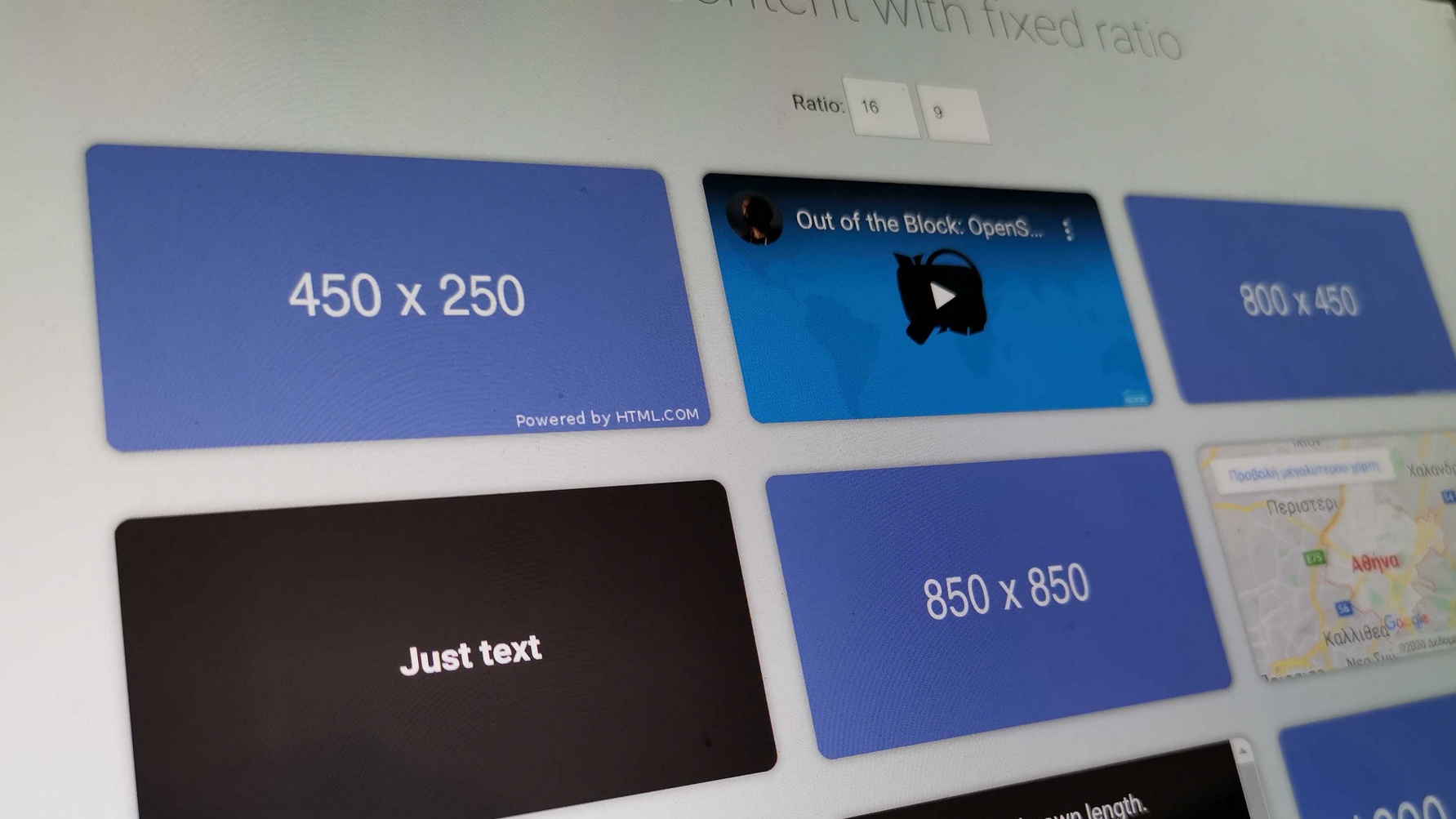

So now you understand the core concept, here’s some examples of how to use it with the full CSS. So basically divide the width of your element by 100 and then divide the height of your element by that.Įasy enough but it takes some thinking about. “h” represents the height of your element and “w” represents the width. I’m always forgetting how to do the equation and it takes energy…but here’s how it works, if you want to do it manually: Well you can always use the calculator above – that’s why I made it. So how do you work out the padding-bottom? Making this super awesome for responsive web design. You have an empty and it’s container has a width of 200px.Īnd what’s so powerful about this, is that when that then scales down to 146px, it’s height will be 73px (which is still in proportion to its width). This is because when you set the padding-bottom as a percentage, it will be worked out as a percentage of the width. So the best way to make elements use an aspect ratio is to set the height to 0 and give the padding bottom as a percentage. Now, with images it’s easy to achieve, but when it comes to iframes, embeds and ’s it can be a little tricky. Think of the way an image scales down its height in proportion to its width in responsive design. This makes sense because the iPhone camera's video setting can record footage in both 16:9 and 9:16.The “aspect ratio” is the correlation between the height and width of an element. The same goes for other famous apps with "story" features, including Snapchat and Facebook. This aspect ratio became famous after the launch of smartphones with video capabilities.įor instance, the optimal measure for an Instagram story is 1080 px by 1920 px, and thus its ratio comes out as 9:16. You are likely to look for the videos with this aspect ratio in notable museums, theme parks, theaters, and the like.Ī 9:16 aspect ratio is for tall videos. Anamorphic format videos create an optical illusion that offers a 360-degree view. It is also helpful for films with an anamorphic format. It is often called cinematic widescreen or ultra-widescreen.

The 21:9 aspect ratios have a pretty specific purpose. Many micro- to medium-sized cameras still use the 3:2 aspect ratio settings, but broadcasters rarely use it today. The 3:2 aspect ratio was primarily seen in classic 35 mm still photography still used on tablets, laptops, and various game consoles in the handheld form. This aspect ratio was still considered for Apple iPads until they released the 2018 iPad Pro. It's because the 16:9 and 16:10 aspect ratios allow for better resolutions than 4:3 do. The reason for the switch was the HDTV birth. The 4:3 aspect ratio was the general screen size for computer monitors and televisions before 16:9 and 16:10. Many cameras still have a square setting even though it's not the most commonly used aspect ratio. It is much less in demand but usually visible on social media platforms like Facebook or Instagram. The 1:1 video aspect ratio is one of the ideal squares used with square television sets. One of the ideal resolutions you can use with a 16:9 aspect ratio is 4Kor 3840 pixels by 2160 pixels. The standardization of computer monitors and televisions saved producers both the money and time spent in the research field. It is also more cost-effective to use screens compatible with this ratio instead of their predecessors. Many also tend to use this highly famous aspect ratio on their sites. This ratio is mainly used in video creation and streaming and is considered the international standard format for cinema and television. It is also called "1.71:1," the most accessible form of the ratio, mathematically speaking. Here are a few standard aspect ratios that you can use for live streaming and other video creation:Ī 16:9 aspect ratio represents a wide rectangle. Since most videos showcase through standard online video platforms, custom aspect ratios are not commonly used. There are common aspect ratios for modern televisions, but broadcasters can consider using the aspect ratio that operates great with their audience and content. Videos utilized for social media will vary from trailers shows or movies shown in theaters. Aspect ratios are generally selected based on where the video will post, how it will be visible, and what aim it usually serves. There isn't any one-size-fits-all when we need to use the video aspect ratios. Not only screens and videos, but you can use the concept also in images.Īnd, it is written as 'x:y' where 'x' is the width and 'y' is the height. It determines the length of your video or screen. 04 How to Change the Aspect Ratio in Filmora/Filmora Pro? Part 1 Part 1: Typical Aspect Ratios and Sizes of Screens and VideosĪn aspect ratio is a measurement representing the ratio between the width and height of a screen or a video.


 0 kommentar(er)
0 kommentar(er)
